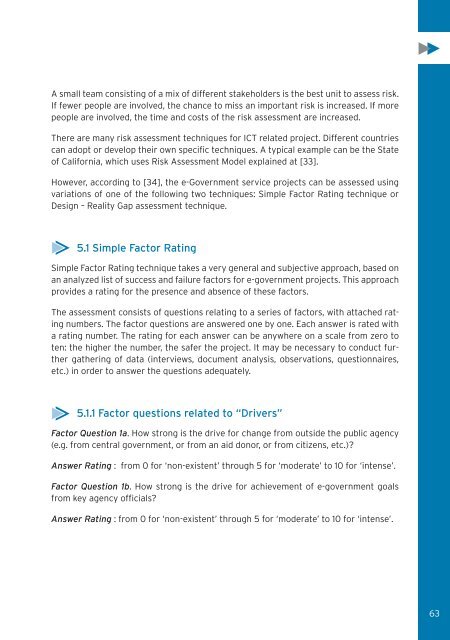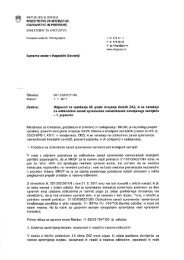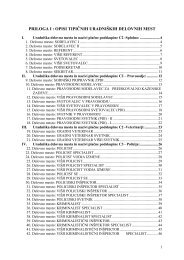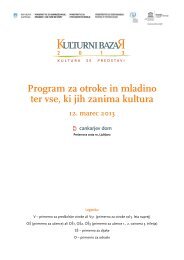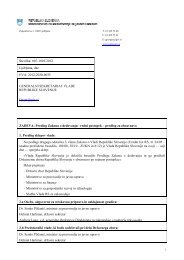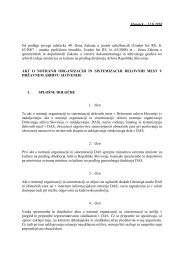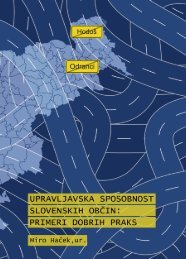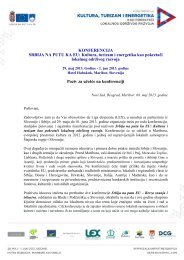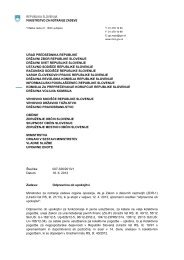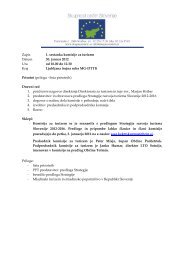for Local Governments
for Local Governments
for Local Governments
Create successful ePaper yourself
Turn your PDF publications into a flip-book with our unique Google optimized e-Paper software.
A small team consisting of a mix of different stakeholders is the best unit to assess risk.<br />
If fewer people are involved, the chance to miss an important risk is increased. If more<br />
people are involved, the time and costs of the risk assessment are increased.<br />
There are many risk assessment techniques <strong>for</strong> ICT related project. Different countries<br />
can adopt or develop their own specific techniques. A typical example can be the State<br />
of Cali<strong>for</strong>nia, which uses Risk Assessment Model explained at [33].<br />
However, according to [34], the e-Government service projects can be assessed using<br />
variations of one of the following two techniques: Simple Factor Rating technique or<br />
Design – Reality Gap assessment technique.<br />
5.1 Simple Factor Rating<br />
Simple Factor Rating technique takes a very general and subjective approach, based on<br />
an analyzed list of success and failure factors <strong>for</strong> e-government projects. This approach<br />
provides a rating <strong>for</strong> the presence and absence of these factors.<br />
The assessment consists of questions relating to a series of factors, with attached rating<br />
numbers. The factor questions are answered one by one. Each answer is rated with<br />
a rating number. The rating <strong>for</strong> each answer can be anywhere on a scale from zero to<br />
ten: the higher the number, the safer the project. It may be necessary to conduct further<br />
gathering of data (interviews, document analysis, observations, questionnaires,<br />
etc.) in order to answer the questions adequately.<br />
5.1.1 Factor questions related to “Drivers”<br />
Factor Question 1a. How strong is the drive <strong>for</strong> change from outside the public agency<br />
(e.g. from central government, or from an aid donor, or from citizens, etc.)?<br />
Answer Rating : from 0 <strong>for</strong> ‘non-existent’ through 5 <strong>for</strong> ‘moderate’ to 10 <strong>for</strong> ‘intense’.<br />
Factor Question 1b. How strong is the drive <strong>for</strong> achievement of e-government goals<br />
from key agency officials?<br />
Answer Rating : from 0 <strong>for</strong> ‘non-existent’ through 5 <strong>for</strong> ‘moderate’ to 10 <strong>for</strong> ‘intense’.<br />
63


